Wimshurst machine
The Wimshurst machine is an electrostatic machine that normally has a crank that you turn by hand, resulting in the creation of sparks. Below is shown a commercially made Wimshurst machine bought on ebay.com. I've taken this Wimhurst machine apart so you can see it.
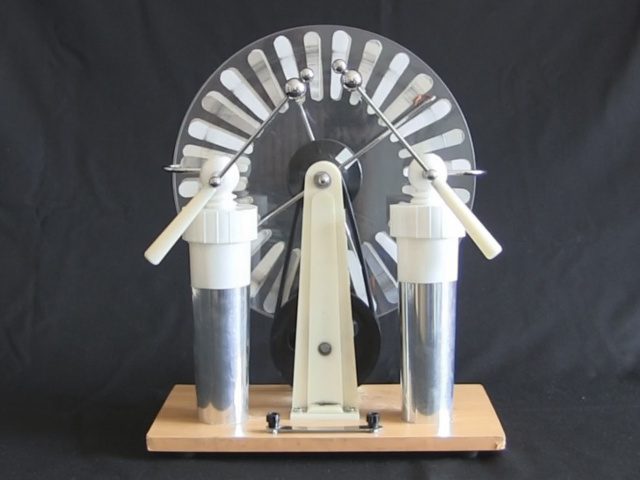
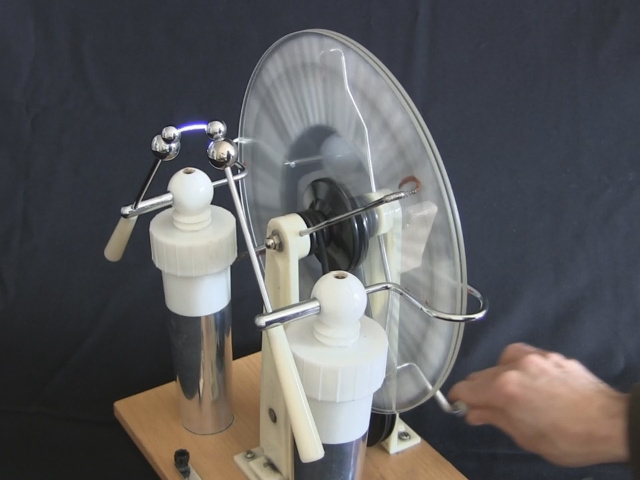
The Wimshurst machine shown below was made by me using two CDs as the disks. Because the disks and the capacitor are small it doesn't build up a lot of charge, resulting in a small spark. You can see a video below of how to make it step-by-step.
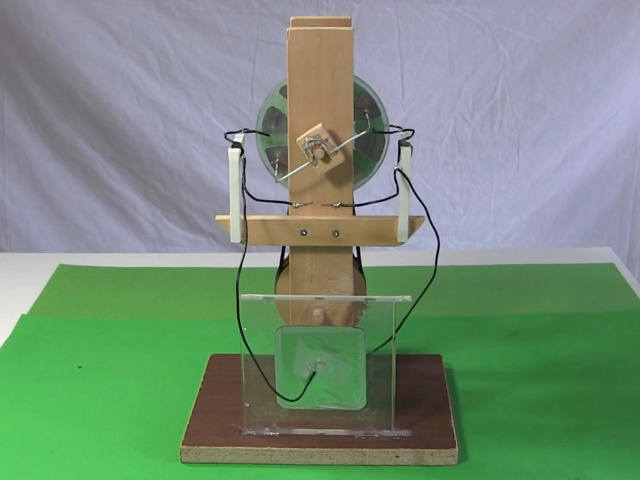

The parts of a Wimshurst machine and a bit about how it works
A Wimshurst machine has two disks (see the diagrams below), each with metal sectors (or segments) on their outer faces. The disks turn in opposite directions. The hand crank is connected directly to two big pulleys near the bottom. Belts then extend from these big pulleys up to small pulleys attached to each disk. However, one of the belts is twisted, like the number 8, causing that disk to turn in the opposite direction of the other disk, whose belt is not twisted.
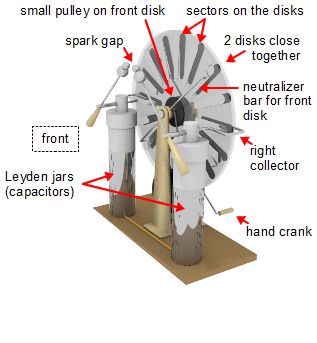
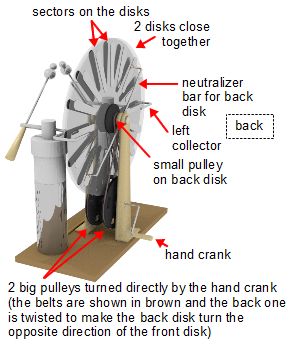
How the Wimsurst machine works - summary
The video below gives a detailed explanation for how the Wimshurst machine works, but here it a summary.
Each disk also has a neutralizer bar touching sectors it on its outer face. The rotation of the disks, in conjunction with these neutralizer bars and the principle of electrostatic induction, causes the sectors of the disks to become electrostatically charged. Charges of one polarity are carried to the colletor on one side of the machine (e.g. the left side), and charges of the opposite polarity are carried to the collector on the other side of the machine (e.g. the right side.) The respective collectors carry that charge to the Leyden jar and the side of the spark gap on that collector's side of the machine (left side or right side.) Once enough charge has built up on both sides of the spark gap to break down the air in that gap, a spark occurs. That spark neutralizes the charge on both sides of the spark gap and Leyden jars. More charge continues to be gotten from the disks at the collectors and the process repeats.
Video - How a Wimshurst machine works
Here's a very detailed video on how the Wimshurst machine works.
How to make a Wimshurst machine using CDs
Below is a video showing step-by-step how to make a Wimshurst machine using CDs. However, the video doesn't contain any dimensions for the wooden parts so I've included them below. All the dimensions shown are good as rough guides but none of them have to be precise. You basically prepare the pulleys and CDs first, and then work out what dimensions will work for you from those given your available wood. To help a little further, the dimensions shown in white are more helpful, though even those are flexible.
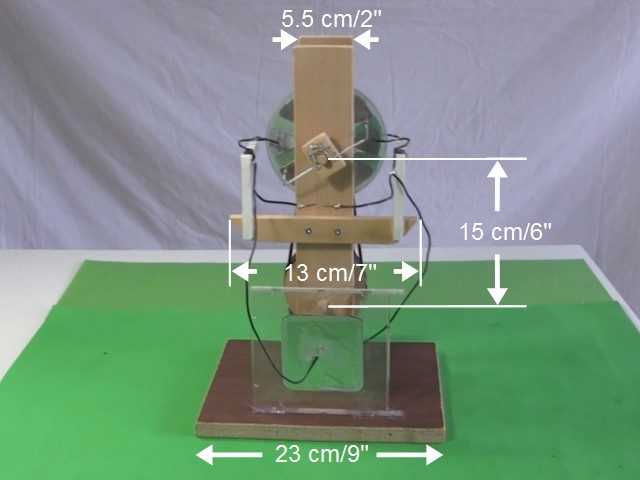

Video - Wimshurst Machine - How to Make using CDs
Here's a step-by-step video showing how to make a Wimshurst Machine using CDs. It's the same one I show photos of above.
